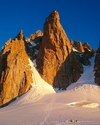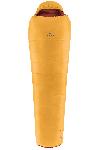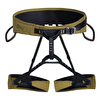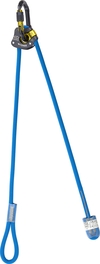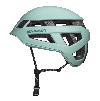No way down. The book by Graham Bowley about the 2008 tragedy on K2
No Way Down: Life and Death on K2 by Graham Bowley has now been published in Italy by Mondadori. The book retraces the 2008 tragedy on K2 which cost the lives of 11 alpinists and only Italian mountaineer Marco Confortola survived.
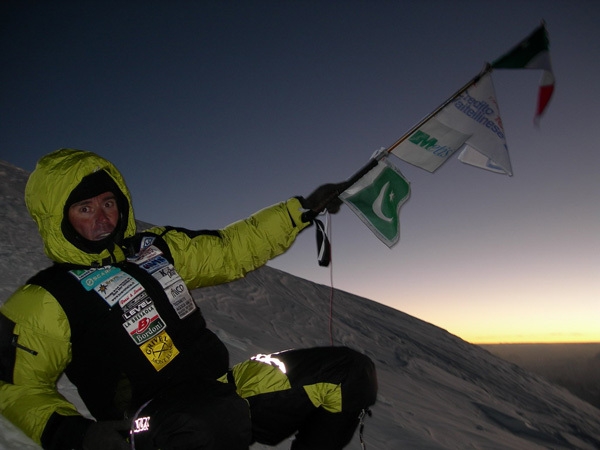
 1 / 5
1 / 5
Marco Confortola on the summit of K2 in 2008
 archivio Marco Confortola
archivio Marco Confortola
"It's highly likely that we will have to wait a long time before a complete reconstruction and analysis of events will come forward. And even then, experience unfortunately shows that not everything can be clarified..." This is what we wrote just less than three years ago, in the immediate aftermath of the terrible 2008 K2 tragedy which cost the lives of 11 alpinists. Our prediction was almost too simple, made on the basis of numerous other ordeals which, together with the pain and suffering, are ... followed by reconstructions which are revised, corrected and often questioned. The same happened for this tragedy on K2 which has recently returned to the limelight.
In these day the book "No Way Down: Life and Death on K2" has been published in Italy. Written by The New York Times journalist Graham Bowley and published in Italy by Mondadori, the book gives voice to those who were involved in the sad turn of events. Starting with the testimony of Marco Confortola, the Italian alpinist from Valfurva who was the only man survivor of the group of mountaineers who were imprisoned between the summit and the traverse and "Bottlenck" which seperated them from life itself. The book continues with the statements made by family members and the partner of Irish mountaineer Gerard "Jesus" McDonnell who bivied, together with Confortola, beneath the summit at circa 8300m before disappearing forever. And the book also traces the testimony of Sherpa Pemba Gyalje (2008 Adventurer of the Year for National Geographic Adventure) who not only saved Confortola's life by joining him at the base of the Bottleneck and dragging him down to Camp 4, but also Dutchman Wilco van Rooijen who had got lost during the descent.
In an interview prior to the book being released in Italy published in last week's Sportweek magazine, Bowley states that his intent was to hear what everyone had to say, without omitting the doubts about what happened during those K2 days. Like those raised by Gerard McDonnell 's American girlfriend who does not believe in Confortola's version of how the Irish mountaineer disappeared: "She is convinced that Marco abandoned his companion and the Koreans..." The American journalist stated furthermore that he did not want to draw any conclusions, rather, his aim was to provide readers with the different testimonies and diverse points of view. The book therefore offers no "conclusion" nor a definitive reconstruction of events. And it could be not do otherwise. Because what happened on K2 in 2008 is, from certain points of view, emblematic of alpinism of our times, but not only.
In 2009 Marco Confortola dedicated a book, "Giorni di ghiaccio" (Dalai Editore) to this terrible experience, while on TV and to journalists he repeatedly recounted what he lived through on the most beautiful and most difficult 8000m peak. Nevertheless, he continues to bear the burden and destiny of being the only witness of the tragedy. He cannot, and we fear he will not, avoid this. It's a paradox: only he can recount what happened, but there will always be those who doubt him. Not only because it all took place at those extremely high altitudes where the mechanisms of life degrade, include cerebral functions such as attention, memory and in general all cognitive capacities. But also because, in this like in all tragedies, the border between inevitable destiny and human error or wrong decisions is more ill-defined than ever.
In fact, if one thing is certain, then it is the series of "errors" of "wrong decisions" which seem to have been taken by many alpinists in both the initial and final stages of the ascent. There were too many. They were too slow. Probably they equipped the Bottle Neck inadequately. some were perhaps not even capable of carrying out that ascent. Very few judged that situation as being extremely critical. But above all, the majority did not heed one of the commandments of the 8000m peaks: there's a cut-off point for the ascent, after which you need to turn around, regardless of the distance to the summit even if weather conditions, like on that day, are perfect. It's clear that this doesn't always take place: it happened and will happen again that someone pushes themselves beyond this point, that they "take the risk". But this forms an integral a part of individual choices and decisions which every alpinist must have the ability to make while, when they are present, being aware and unfortunately "accepting" the consequences.
We wish to add that this type of analysis has nothing to do with a lack of respect for the pain for those who are no longer with us, nor with a catastrophic vision of alpinism. As we have written on various occasions, mistakes are made and alpinists will continue to make mistakes in the mountains. Just like we will continue to enjoy the immense joy of climbing mountains. But mountaineering is also about being aware of the risks, knowing how to judge them and, last but not least, having a profound and clear motivation which goes beyond reaching the aim at all costs. Only like this can one renounce, abandon aims. That knowing how to turn back which many great mountaineers have indicated as being essential. This is the hardest exercise of all. Just like it difficult and, in some respects a mistake, to sustain that this is the "truth" and the "key" to this and other mountain accidents. Talking about them, writing about them and analysing them is only an attempt to question oneself, to get a greater understanding to take to the mountains with greater awareness and knowledge of ourselves.
It is for this reason that, while waiting to read the book by Graham Bowley, that we recommend two videos. The first was published on the Italian newspaper site Gazzetta dello Sport and documents the testimony of the Sherpa hero Pemba Gyalje who saved Confortola and Wilco van Rooijen on K2. The second, which we filmed in 2009 at the TrentoFestival, is Marco Confortola's first-hand account of what he experienced on K2.
K2 tragedy, the Sherpa hero
Marco Confortola introducing Giorni di ghiaccio. Agosto 2008. La tragedia del K2
Note:
Latest news
Show all latest news
Expo / News
Expo / Products
Climbing shoe designed for climbers looking for comfort.
Down sleeping bag for multi‑season trekking.
La Sportiva Jackal II are trail running shoes dedicated to the world of ULTRA races and long distance training.
High-end one-buckle climbing harness combining comfort and light weight.
Adjustable lanyard for mountaineering and rock climbing by Climbing Technology
Light climbing helmet with kevlar reinforcements.



 Copia link
Copia link



